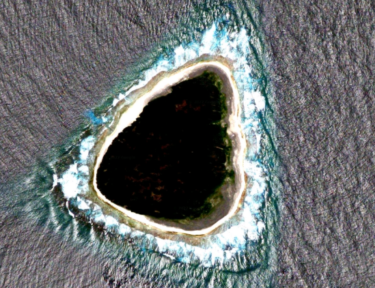World’s Largest Bee That Was Thought to Be Extinct Has Been Rediscovered Alive
If you’re scared of bees, you probably don’t want to read this. But if you dare continue, you can probably tell from the headline of this article, the world’s largest bee that was once thought to be extinct has just been found—alive and well.
We’ll cut right to the chase: Wallace’s giant bee (also known as Megachile pluto), which got its name from the man who first discovered them: a British naturalist named Alfred Russel Wallace in 1858.
It’s considered the largest bee in the world, but was last seen back in 1981. Even before then, it wasn’t seen very—just a few times has it been documented from 1958 to 1981. And for the past 38 years, it was thought to have been extinct, as no one has documented seeing one.
Until now.
Nature photographer Clay Bolt and entomologist Eli Wyman knew there had to be a Wallace’s giant bee around somewhere, and went on to search the North Moluccas islands in Indonesia.
When the two finally found the bee, they were amazed—and beyond ecstatic. “I simply couldn’t believe it,” Bolt said. “We had discovered Wallace’s Giant Bee. My goal was to be the first person to make a photo of a living Wallace’s Giant Bee and I had achieved that goal.”
(Read: This is why we’re not nature photographers or entomologists. Someone who gets that excited over such a large insect is a rare breed—like the bee!)
The two found the female bee in a termite nest on the side of a tree—apparently, it’s pretty common for female Wallace’s giant bees to bees use wood, like that from a tree, to create tunnels in nests that they carve out to create their own place to live.
So how big is this thing, rally? Well, the Wallace’s giant bee is four times bigger than a regular honeybee. It also contains large beetle-like mandibles. We think that sounds terrifying, but the nature photographer described the bee as “breathtaking.”
“It was absolutely breathtaking to see this ‘flying bulldog’ of an insect that we weren’t sure existed anymore, to have real proof right there in front of us in the wild,” Bolt said. “To actually see how beautiful and big the species is in life, to hear the sound of its giant wings thrumming as it flew past my head, was just incredible.”
Besides documenting the bee, Bolt and Wyman want their discovery of the Wallace’s giant bee to bring awareness to it and the need to protect it.
“[We wanted to do this] to see it in the wild, to document it, but also to make local contacts in Indonesia that could begin to work with us as partners to try and figure out how to protect the bee,” Bolt said.
To learn more about the Wallace’s giant be and get a glance of what the newly rediscovered insect looks like, check out the video below!
What do you think of the Wallace’s giant bee? Did you know that a bee of this size even existed?




